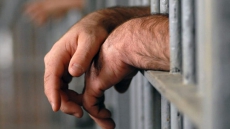TORONTO — A serial killer sexually assaulted many of his victims, all men from Toronto's gay village, before murdering them and hiding their remains around a property where he worked as landscaper.
Bruce McArthur, 67, pleaded guilty Tuesday to first-degree murder in the deaths of eight men who went missing between 2010 and 2017.
"Mr. McArthur intended and caused all of their deaths," said Crown attorney Michael Cantlon. "After he murdered the men, Mr. McArthur, in an effort to avoid detection, dismembered their bodies."
McArthur, who appeared in court wearing a black sweater over a collared shirt, looked straight ahead of him, saying "yes" repeatedly as the judge asked if he was pleading guilty to each count. Members of the victims' families and the city's LGBTQ community packed the courtroom.
Police arrested McArthur a year ago and eventually charged him in the deaths of Selim Esen, Andrew Kinsman, Majeed Kayhan, Dean Lisowick, Soroush Mahmudi, Skandaraj Navaratnam, Abdulbasir Faizi, and Kirushna Kanagaratnam.
Prosecutors laid out previously unheard details about the case in court Tuesday, saying investigators found victims' belongings in McArthur's home, including a bracelet owned by Navaratnam, jewelry that belonged to Lisowick and a notebook that belonged to Esen.
They also found a duffel bag containing duct tape, a surgical glove, rope, zip ties, a bungee cord and syringes that belonged to McArthur in his bedroom. Items with victims' DNA and the murder weapon used in two cases were also found in McArthur's van.
Many of the killings involved sexual assaults and ligatures, Cantlon said, adding that some also included confinement with ropes.
He said several of the slain men had also been "staged" but did not elaborate on what that entailed. The term is typically used to suggest a body has been repositioned for a specific purpose, such as hampering an investigation.
McArthur buried his victims' remains in planters at a home where he worked as a gardener and in a ravine next to the property, Cantlon said.
First-degree murder carries an automatic life sentence with no chance of parole for 25 years. A sentencing hearing for McArthur is scheduled for Feb. 4, when the court is expected to hear from those affected by the killings.
Some expressed relief at McArthur's plea, but said nothing can bring back the men he killed or undo the harm he has caused.
"These losses have forever changed the lives of families, friends, loved ones and have left our communities shaken and aggrieved," said The 519, a community organization serving Toronto's LGBTQ2S communities.
"The fact that it remained unknown and unseen for so many years is its own inconceivable tragedy."
Toronto police Det. David Dickinson said that if any mistakes were made in the investigation, police should learn from them.
The LGBTQ community had long said someone was targeting men who were vanishing from the city's gay village.
In November 2012, police launched Project Houston to investigate the disappearances of 42-year-old Faizi, 40-year-old Navaratnam and 58-year-old Kayhan. They closed the probe in April 2014 after being unable to identify a suspect in their disappearances.
In the summer of 2017, police launched a separate investigation known as Project Prism into the disappearances of 49-year-old Kinsman and 44-year-old Esen. Within months, McArthur came on the police radar, according to court documents.
On Jan. 17, 2018, investigators uncovered evidence alleging McArthur was responsible for both Kinsman and Esen's deaths, along with the deaths of other unidentified people.
The next day, police arrested McArthur at his apartment and charged him with the murders of Kinsman and Esen. They brought cadaver dogs the following day to a property nearby where McArthur, a self-employed landscaper, stored his equipment, court documents said.
Over the next three months, investigators made several grisly discoveries at the residential property in midtown Toronto, eventually finding the dismembered remains of seven men in large planters. The remains of an eighth man were found in a large compost pile in a ravine behind the home, police said.
Partway through their investigation, police also made the rare decision to release a heavily edited photograph of a dead man in a bid to identify him. A month later they said the man in the photograph was Kanagaratnam.
Lead investigator Insp. Hank Idsinga said the McArthur probe was the largest forensic examination in the force's history.
Forensic officers spent four months scouring McArthur's apartment— they seized 1,800 exhibits and snapped more than 18,000 photographs of the scene. They also searched more than 100 properties where McArthur worked across the Toronto area.
A glance at the eight victims of Toronto serial killer Bruce McArthur
TORONTO — Here is a glance at the victims of serial killer Bruce McArthur, who has pleaded guilty to eight counts of first-degree murder:
MAJEED KAYHAN
The 58-year-old Toronto man was killed on or about Oct. 18, 2012. Police investigated his death as part of Project Houston, which ran from November 2012 to April 2014 and probed the disappearances of three men who went missing from Toronto's gay village. The probe was closed after yielding neither suspects nor leads on what happened to the men. Kayhan's death was sexual in nature.
SOROUSH MAHMUDI
The 50-year-old was killed on or about Aug. 15, 2015. He was reported missing by his family in east Toronto. A ligature was used in Mahmudi's death, which was sexual in nature. A coat found in McArthur's van contained Mahmudi's DNA. The same coat was connected to the staging of other deceased victims.
DEAN LISOWICK
Lisowick, of no fixed address, was killed on or about April 23, 2016. He was 43 or 44 years old and was never reported missing. Lisowick didn't fit the profile of the earlier victims, who were gay and of Middle Eastern descent. A ligature was used in Lisowick's murder, which was sexual in nature. Jewelry belonging to Lisowick was found in McArthur's bedroom.
SELIM ESEN
Esen, 44, of Toronto, was killed on or about April 16, 2017. The disappearance became part of a police investigation called Project Prism, launched in August 2017. Five months later, McArthur was charged with Esen's presumed death. A ligature was used in his murder, and there was evidence of confinment with ropes. Esen's DNA as well as the weapon used in his murder were found inside McArthur's van. Esen's notebook was later found in McArthur's apartment.
ANDREW KINSMAN
The 49-year-old Toronto man was killed on or about June 26, 2017. Kinsman, who was also a subject of Project Prism, had a sexual relationship with McArthur. Kinsman's sisters said they searched for their brother for six months before police eventually charged McArthur in his death. A ligature was used in his murder as well as confinment with ropes. Video surveillance showed Kinsman getting into McArthur's van outside Kinsman's home. Kinsman's DNA and the weapon used in his murder were found inside McArthur's van.
SKANDARAJ NAVARATNAM
The 40-year-old was killed on or about Sept. 6, 2010. During the investigation, police found a piece of leather lacing from McArthur's van that contained Navaratnam's DNA. A bracelet belonging to Navaratnam was found in McArthur's bedroom.
ABDULBASIR FAIZI
Faizi was killed on or about Dec. 29, 2010. The 42-year-old was last seen in Toronto's gay village. His vehicle was found near the home of one of McArthur's landscaping clients. Faizi's disappearance was also investigated as part of Project Houston.
KIRUSHNA KANAGARATNAM
Kanagaratnam arrived in Toronto from Sri Lanka in 2010 and police believe he died on or about Jan. 6, 2016, at age 37. He was never reported missing and unlike McArthur's other victims, Kanagaratnam had no clear ties to the LGBTQ community. A ligature was used in his murder, which was sexual in nature. An unnamed international agency helped identify Kanagaratnam after investigators released a heavily edited photo of a dead man in a plea for public help.
SOURCE: Toronto police


